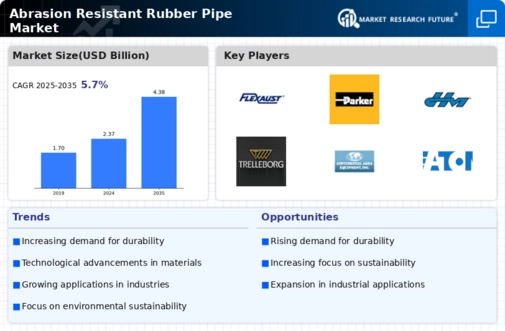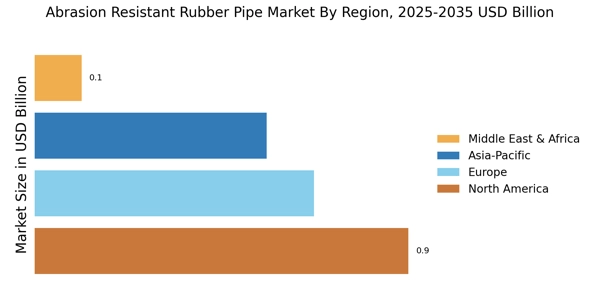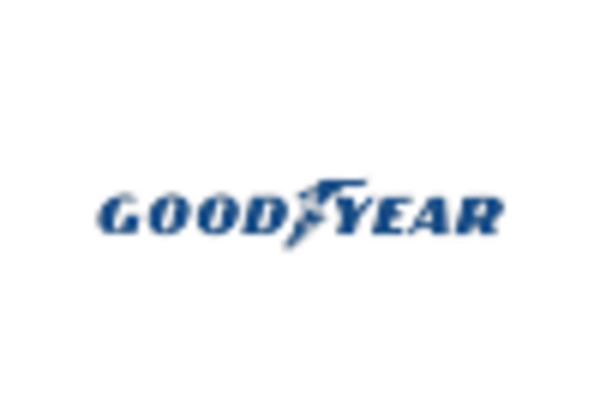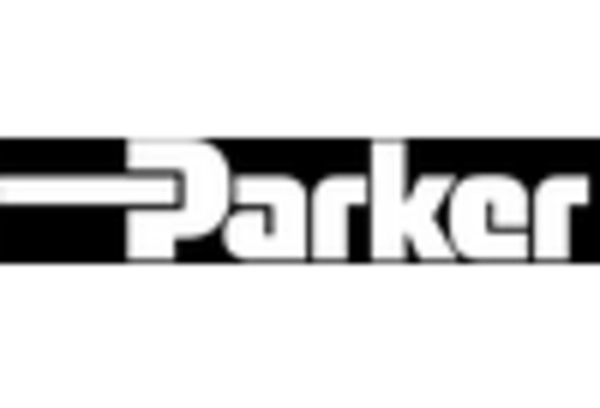Expansion of Oil and Gas Sector
The Abrasion Resistant Rubber Pipe Market is benefiting from the expansion of the oil and gas sector, which requires robust piping solutions for the transportation of various fluids and materials. As exploration and production activities increase, the demand for high-performance rubber pipes that can withstand harsh conditions and abrasive substances is on the rise. The oil and gas industry is projected to grow at a CAGR of around 4.5% over the next few years, driven by the need for efficient and reliable infrastructure. This growth is likely to spur investments in advanced rubber technologies that enhance the durability and performance of abrasion resistant pipes. As a result, manufacturers are expected to focus on developing innovative products that cater to the specific requirements of the oil and gas sector, thereby solidifying their position in the market.
Rising Environmental Regulations
The Abrasion Resistant Rubber Pipe Market is increasingly influenced by rising environmental regulations aimed at reducing waste and promoting sustainability. Governments and regulatory bodies are implementing stringent guidelines that necessitate the use of eco-friendly materials in various industries, including construction and mining. This shift is prompting manufacturers to innovate and produce abrasion resistant rubber pipes that are not only durable but also environmentally friendly. The market for sustainable materials is projected to grow at a CAGR of approximately 5% in the next few years, reflecting the increasing consumer preference for products that align with environmental standards. Consequently, companies that prioritize sustainability in their product offerings are likely to gain a competitive edge in the abrasion resistant rubber pipe market, appealing to environmentally conscious consumers and businesses alike.
Growth in Construction Activities
The Abrasion Resistant Rubber Pipe Market is poised to benefit from the ongoing growth in construction activities across various regions. As urbanization accelerates, the demand for infrastructure development, including roads, bridges, and buildings, is on the rise. Abrasion resistant rubber pipes are increasingly utilized in construction for their ability to withstand harsh conditions and abrasive materials. The construction sector is anticipated to grow at a CAGR of around 4% in the coming years, which will likely lead to a heightened demand for these specialized pipes. Furthermore, the emphasis on sustainable construction practices is driving the adoption of materials that offer longevity and reduced maintenance costs. This trend suggests that abrasion resistant rubber pipes will play a crucial role in meeting the evolving needs of the construction industry, ensuring efficient and reliable performance in various applications.
Increasing Demand from Mining Industry
The Abrasion Resistant Rubber Pipe Market is experiencing a notable surge in demand, particularly from the mining sector. As mining operations expand, the need for durable and resilient piping solutions becomes paramount. These pipes are essential for transporting abrasive materials such as slurry and ore, which can cause significant wear and tear on conventional pipes. The mining industry is projected to grow at a compound annual growth rate (CAGR) of approximately 5% over the next few years, further driving the demand for abrasion resistant rubber pipes. This growth is likely to be fueled by the increasing extraction of minerals and the need for efficient material handling systems. Consequently, manufacturers are focusing on developing advanced rubber compounds that enhance the durability and lifespan of these pipes, thereby catering to the specific needs of the mining industry.
Technological Innovations in Material Science
The Abrasion Resistant Rubber Pipe Market is witnessing a wave of technological innovations in material science, which is enhancing the performance and durability of rubber pipes. Recent advancements in polymer technology have led to the development of new rubber formulations that exhibit superior abrasion resistance and flexibility. These innovations are crucial for industries such as oil and gas, where pipes are subjected to extreme conditions and abrasive substances. The market for advanced rubber materials is expected to grow significantly, with estimates suggesting a CAGR of 6% over the next five years. This growth is indicative of the increasing investment in research and development aimed at improving the properties of abrasion resistant rubber pipes. As a result, manufacturers are likely to introduce products that not only meet but exceed industry standards, thereby expanding their market share and enhancing customer satisfaction.


















Leave a Comment